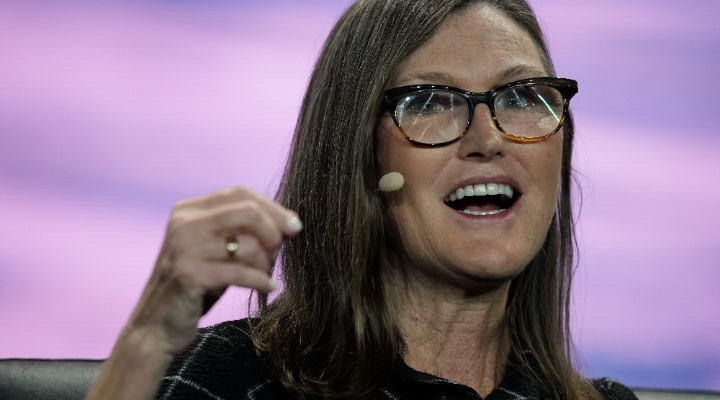Ruth Saldanha: It's been a month since the U.S. saw the launch of bitcoin ETFs, with much fanfare and drama, it must be noted. Billions of dollars flowed into these funds, it is true. But how much exactly? And who garnered the most money? Sylvester Flood is a Senior Product Manager for Morningstar, Inc., and he closely tracks funds flows. He's here today to talk about the flows into bitcoin ETFs. Syl, thank you so much for being here today.
Sylvester Flood: Glad to be here, Ruth. Good to see you.
How Much Money Did the New U.S. Bitcoin ETFs Actually Get?
Saldanha: So, let's start with the most important question. How much money went into these newly launched spot bitcoin ETFs?
Flood: Well, Ruth, quite a bit. It was a bit of a slow start. But since they launched on January 11th, the tally is up to US$7.7 billion.
How Many Bitcoin ETFs Are There, And Did They All Get Inflows?
Saldanha: How many of these bitcoin ETFs exist and are all of them counted towards the flows that we have?
Flood: Good question. So, there are 10 new spot bitcoin ETFs and there's one ETF that had existed already that converted to a spot bitcoin ETF called Grayscale Bitcoin Trust. It was very large. It converted around the 12th of January. So, they actually had outflows from that Grayscale fund mainly because the shareholders in that fund had purchased the shares in it but couldn't redeem them at full value of the underlying Bitcoin. So, once they had the opportunity to do that, they did it. So, the outflows from that Grayscale fund have actually been significant, about $5 billion, but they expected that. So, it's not a surprise. The launches of the 10 new ones, I would say have been very successful. The bitcoin or the crypto community had expected probably more flows, but from a mutual fund flows standpoint, drawing in over $7 billion in less than a month is a big success.
How Are Bitcoin ETF Flows Calculated?
Saldanha: Help us understand these flows numbers. How do you calculate them?
Flood: It's pretty simple. Every day ETFs publish a NAV, end of day NAV, net asset value, just like a mutual fund does. They also supply us with shares outstanding and the flows are just the difference from day to day between the shares outstanding and that asset value and that gives us actually the actual flow into and out of these funds.
How Much of the Bitcoin ETF Flows is Net New Money?
Saldanha: So, let's talk a little bit about that Grayscale fund and other funds like it. How much of this is net new money and how much of it is just flowed from one ETF into another?
Flood: We can only guess at that because the identities of the buyers and sellers are not known to us and really no one knows. But my guess would be that very little of the new money is coming from the grayscale shareholders. There wouldn't really be any reason for them to leave that one, that bitcoin, spot bitcoin fund and go to the others, except that the grayscale fund has very high expenses of 1.5%, I think. I would imagine that expenses going to – they're going to have to change it just to be competitive. The other new funds have expenses which are about one fifth to one sixth as much as the Grayscale fund. So, I think that net new of that 7.7 billion most of it is new money.
Will More Money Flow Into the New Bitcoin ETFs?
Saldanha: Interesting. Now you said at the start it was a bit slow and then it kind of spiked a little bit. At this stage, do you think that the flows have reached about a plateau for these new bitcoin ETFs?
Flood: I think they're going to keep coming in because especially in the U.S. market there's long been demand by clients of their advisors to give them bitcoin positions in their portfolios. And some of the platforms here developed ways for advisors to do that over the years. They were still a little bit obtuse and kind of strange for the advisors to deal with. They did it though, but you just couldn't look up your position in bitcoin like you could a stock or a fund. Basically, what they've done now is created kind of an easy button for advisors. If the clients are familiar with the ETF structure, all they have to do is say great there's an ETF now that we can use to give you a position in Bitcoin and frankly that's going to be really attractive to advisors. And advisors just don't jump in and out of things. And so, I think over time, especially over the next quarter which is the cycle in which advisors work with clients and make adjustments to their portfolios. You're basically going to see a steady inflow stream into these spot bitcoin ETFs coming through advisors.
Saldanha: We'll ask again in a quarter how much that is. Thank you so much for joining us today, Syl.
Flood: Oh, you're welcome, Ruth. Anytime.
Saldanha: For Morningstar, I'm Ruth Saldanha.
The author or authors do not own shares in any securities mentioned in this video.






:quality(80)/cloudfront-us-east-1.images.arcpublishing.com/morningstar/6ZMXY4RCRNEADPDWYQVTTWALWM.jpg)
:quality(80)/cloudfront-us-east-1.images.arcpublishing.com/morningstar/MNPB4CP64NCNLA3MTELE3ISLRY.jpg)
:quality(80)/cloudfront-us-east-1.images.arcpublishing.com/morningstar/G3DCA6SF2FAR5PKHPEXOIB6CWQ.jpg)











